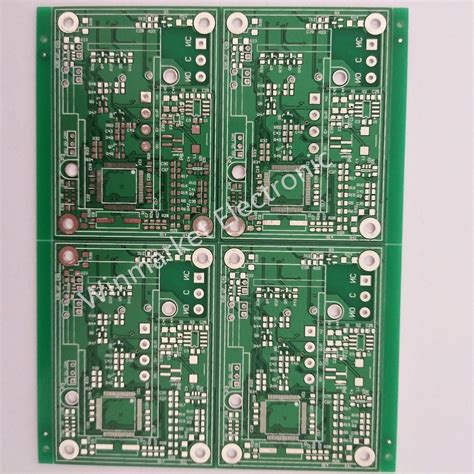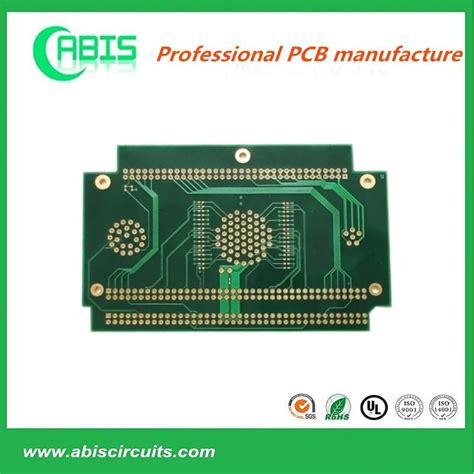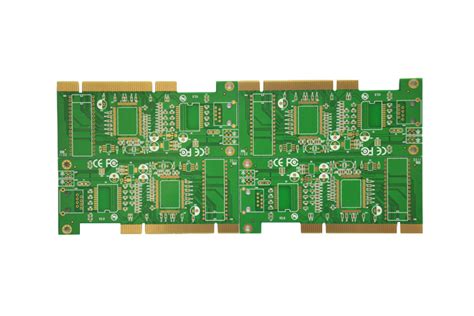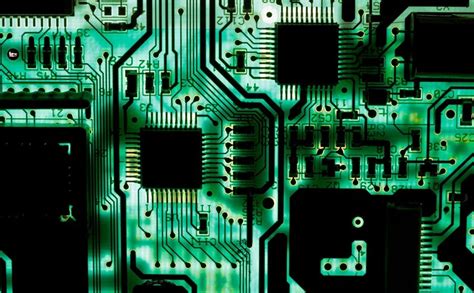Unlocking Innovation: Custom PCB Printing and Assembly Solutions
Key Takeaways
Custom PCB printing and assembly play a pivotal role in the realm of modern electronics. The significance of custom PCB solutions lies in their ability to meet the unique demands of various applications, allowing designers to create specialized circuits that align perfectly with their requirements. This innovation not only fosters creativity but also enhances design flexibility, enabling developers to optimize layouts and features without being constrained by standard options. Furthermore, when it comes to pcb assembly, companies can achieve significant efficiency gains through streamlined processes, ensuring faster turnaround times and reduced production costs. These advancements contribute positively to overall project timelines and resource allocation. On top of that, maintaining high standards of quality assurance in pcba ensures that the final products are reliable and meet stringent performance criteria. As industries continue to evolve, embracing emerging technologies in PCB printing and assembly will be critical for tackling future challenges and harnessing cutting-edge capabilities that drive innovation.
The Importance of Custom PCB Printing in Modern Electronics
In today’s rapidly evolving electronics landscape, custom PCB printing plays a pivotal role in driving innovation and meeting the diverse needs of various applications. The growing demand for customized electronics has led to an increased reliance on PCB assembly processes, enabling manufacturers to create tailored solutions that cater specifically to the requirements of their projects. By utilizing advanced techniques such as 3D printing and high-precision imaging technologies, developers can optimize design flexibility, allowing for intricate circuit layouts that were once deemed impossible. This enables engineers to push the boundaries of what is achievable while ensuring that each aspect of the design integrates seamlessly with others.
Moreover, custom PCB solutions significantly enhance efficiency throughout the production lifecycle. The focus on integrated circuit layouts, coupled with automated PCBA processes, ensures reduced lead times and lowers operational costs while improving accuracy. In addition, as quality assurance becomes increasingly critical in electronics manufacturing, employing custom PCB assembly methods ensures that each product meets stringent industry standards without compromising on performance or reliability. Embracing these technologies not only empowers developers to bring their visions to life with precision but also positions businesses at the forefront of innovation in a competitive market.
Enhancing Design Flexibility Through Custom PCB Solutions
The landscape of electronics is rapidly evolving, with demands for greater adaptability and innovation driving the need for custom PCB printing and assembly. Custom PCB solutions offer unparalleled advantages in design flexibility, allowing engineers to create tailored layouts that fit unique project requirements. By integrating advanced techniques in the pcb assembly process, developers can experiment with diverse materials and configurations, ensuring that the final product aligns with specific functional goals. This flexibility not only facilitates intricate designs but also enables rapid prototyping, allowing for faster iterations and modifications without the delays typically associated with standard PCB fabrication. By utilizing innovative materials and processes within pcba, designers can create lightweight yet robust circuits that enhance overall performance while reducing footprint size. Moreover, optimized design strategies minimize waste by allowing for better use of space and resources, which is critical in today’s competitive market. As a result, organizations that leverage custom PCB printing can effectively differentiate their products and accelerate time-to-market by embracing this adaptability at every stage of development.
Efficiency Gains: Streamlining the Assembly Process
In today’s fast-paced technological landscape, the need for efficient pcb assembly processes cannot be overstated. Custom pcb printing and assembly solutions offer significant efficiency gains by integrating advanced automation and precision techniques. The traditional assembly methods are often lengthy and prone to errors; however, with custom PCBA approaches, manufacturers can significantly reduce the assembly time while ensuring higher accuracy.
Utilizing sophisticated machinery and processes, companies can streamline workflows, ultimately enhancing productivity. By employing smart design practices in the pcba process, developers can minimize unnecessary steps, resulting in a faster turnaround for projects. Furthermore, these innovative solutions allow for better resource management, reducing waste and optimizing materials used throughout production.
One key strategy to achieve these efficiency gains is to implement a modular approach to pcb assembly, where components are designed in standard sizes that easily fit into pre-defined layouts. This not only aids in quicker assembly but also facilitates easier upgrades and modifications in future designs.
“Embracing customization in PCB designs promotes not just efficiency but also adaptability in a rapidly evolving market,” notes an industry expert.
With an eye on continual improvement, organizations that focus on custom pcb printing and assembly are well-positioned to meet customer demands while maintaining high-quality standards. Overall, investing in modernized pcba techniques aligns perfectly with the goals of reducing time-to-market while ensuring that every project is executed with precision and excellence.
Quality Assurance in Custom PCB Manufacturing
Achieving high standards in custom PCB manufacturing is critical to the success of any electronic project. To ensure that each PCB assembly meets rigorous quality expectations, a comprehensive approach to quality assurance is employed throughout the manufacturing process. This involves meticulous inspections at various stages, from initial design to final assembly. Utilizing advanced testing methods such as Automated Optical Inspection (AOI) and functional tests helps to identify potential flaws early in the production cycle. These tests not only validate the integrity of individual components but also ensure that the entire pcba functions as intended. Additionally, adhering to internationally recognized standards, such as IPC-A-600 for acceptability of printed boards, guarantees that quality benchmarks are met consistently. By focusing on these aspects of quality assurance, manufacturers can significantly reduce defects and enhance overall reliability, empowering developers to create superior electronic solutions without compromising on performance or safety. The commitment to quality in custom PCB printing and assembly fosters trust and satisfies end-user requirements, ultimately leading to successful project outcomes.
Emerging Technologies in PCB Printing and Assembly
The landscape of custom PCB printing and assembly is continually evolving, influenced by advancements in technology that enhance production capabilities. Among the emerging technologies, additive manufacturing, often referred to as 3D printing, stands out as a transformative force in pcb assembly. This innovation allows for the creation of complex geometries that traditional methods may struggle to achieve, thereby bolstering design flexibility. Additionally, automated assembly techniques are being integrated to improve the efficiency of the pcba process. Automation not only speeds up production but also reduces human error, ensuring that each assembled board meets stringent quality benchmarks. Furthermore, the incorporation of smart technologies, such as machine learning and artificial intelligence, allows for real-time monitoring during both pcb printing and assembly, leading to enhanced quality assurance. By adopting these emerging technologies, developers can push the boundaries of what is possible in electronics design and manufacturing while maintaining high standards of efficiency and quality in their projects.
Case Studies: Successful Projects Utilizing Custom PCBs
In the realm of modern electronics, numerous custom PCB printing and assembly projects have demonstrated remarkable outcomes, significantly impacting various industries. One notable case involved a startup developing a medical device that aimed to enhance patient diagnostics. By leveraging pcb assembly techniques, the company achieved design enhancements that allowed for smaller form factors without compromising functionality. This project showcased how PCBA innovations facilitate intricate designs and usher in new capabilities in healthcare technologies. Another compelling example is in the automotive industry, where a manufacturer implemented custom PCBs to optimize its vehicle tracking systems. The adoption of precise assembly methods not only ensured high-quality outputs but also enabled real-time data processing through advanced functionalities embedded directly on the board. These case studies illustrate that partnerships with skilled pcb assembly service providers can unlock opportunities for improved design flexibility and operational efficiency, empowering creators to actualize their visions with unprecedented accuracy. Businesses across various sectors are increasingly recognizing the transformative potential of custom PCBs as they endeavor to stay ahead in competitive markets. Through these successes, it becomes evident that investing in robust PCBA processes can yield substantial returns, driving innovation and excellence across technology-driven projects.
Cost Management Strategies for Custom PCB Development
Effective cost management is crucial for companies engaged in custom PCB printing and assembly. By understanding the distinct phases of the pcba process, developers can identify where to allocate resources most efficiently. One strategy involves leveraging advanced manufacturing technologies that reduce waste and minimize production costs. This might include adopting automated assembly techniques or investing in state-of-the-art equipment that allows for faster turnaround times. Additionally, collaborating with suppliers that offer competitive pricing on raw materials can significantly impact overall expenses. It’s essential to perform a thorough cost analysis to identify potential areas for savings without compromising on the quality of the pcba. Another effective measure is to design PCBs with manufacturability in mind; optimizing layout and component selection can lead to smoother assembly processes, which ultimately save both time and costs. By combining innovative design with strategic sourcing and manufacturing practices, developers can effectively manage costs while still achieving high-quality results in their custom PCB projects.
Conclusion
In conclusion, the realm of custom PCB printing and assembly has opened up unprecedented avenues for innovation within the electronics industry. With the ability to tailor designs to meet specific project requirements, developers can find themselves empowered by pcb assembly solutions that promote both creativity and efficiency. This flexibility not only enables the adaptation of projects but also drives down production times and costs associated with conventional methods.
Furthermore, maintaining high standards of quality assurance in pcba processes ensures that each component is meticulously produced and assembled, fostering reliability in every application. As emerging technologies continue to reshape this landscape, the potential for streamlined workflows and enhanced design capabilities will only expand.
Investing in tailored solutions for custom PCB manufacturing can yield significant returns, as illustrated by various successful case studies showcasing optimized performance outcomes. Organizations looking to stay ahead in their respective markets must consider integrating these cutting-edge practices into their development strategies.
The continuous evolution of technologies surrounding pcb assembly will undoubtedly challenge conventional manufacturing norms while enhancing overall project outcomes, solidifying the importance of embracing these modern solutions.
FAQs
What is custom PCB printing and assembly?
Custom PCB printing and assembly involve the creation and integration of unique printed circuit boards tailored to specific project requirements. This process allows developers to design circuits that meet their precise specifications while enhancing performance and reliability.
How does PCB assembly contribute to overall project success?
Effective PCB assembly, or PCBA, is crucial for ensuring that electronic devices function correctly. By employing advanced techniques, developers can streamline the assembly process, reduce errors, and enhance quality assurance, ultimately supporting project timelines and objectives.
What advantages do custom PCB solutions provide?
Custom PCBs offer enhanced design flexibility, allowing for innovative configurations that traditional boards may not accommodate. This flexibility enables developers to incorporate features tailored to their specific needs, addressing challenges with innovative solutions.
Are there specific industries that benefit more from custom PCB assembly?
Yes! Industries such as telecommunications, automotive, and healthcare often require specialized PCBA solutions. The ability to customize circuits can lead to improvements in functionality and efficiency, making custom solutions particularly valuable in these sectors.
How can one ensure quality assurance during the PCB manufacturing process?
Quality assurance in custom PCB manufacturing involves rigorous testing at various stages of production. Implementing strict quality control measures helps identify potential issues early on, ensuring that the final product meets high standards for reliability and performance.







